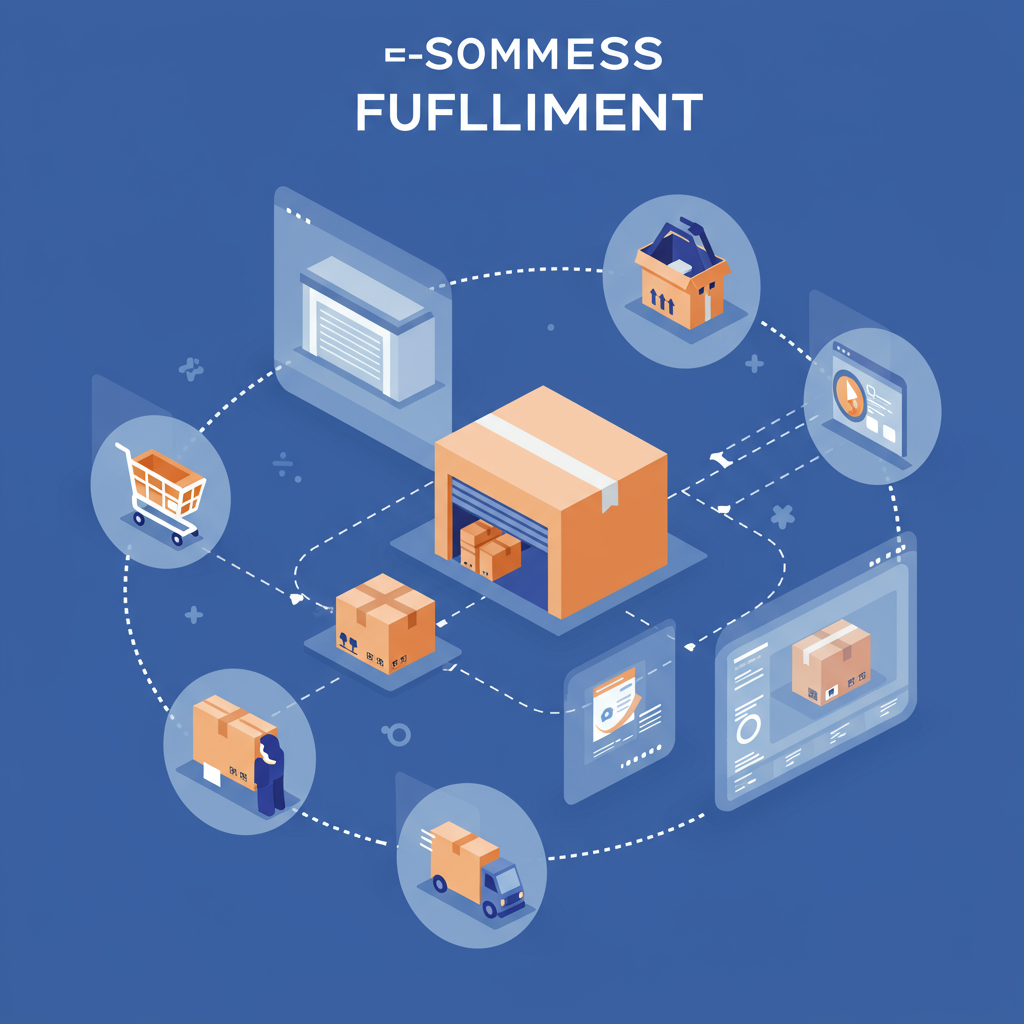Transforming manual order processing into a streamlined, efficient, and scalable operation for your e-commerce business.
As an e-commerce merchant, I know firsthand the daily grind of running a Shopify store. One of the most time-consuming, yet critical, aspects is order fulfillment.
From the moment a customer clicks “buy” to the package arriving at their doorstep, there’s a complex dance of picking, packing, shipping, and communicating.
Initially, handling a few orders manually might seem manageable. But as your business grows, this manual process quickly becomes a bottleneck, eating into your time and profit margins.
That’s why I’m here to share my insights on how to effectively automate fulfillment in Shopify, transforming a potential headache into a streamlined operation.
Automation isn’t just about saving time; it’s about reducing errors, improving customer satisfaction, and freeing you up to focus on growth strategies.
First, let’s talk about the “why.” Why should you invest time and resources into automating something you might already be doing?
**Efficiency:** Automated workflows process orders faster, ensuring quicker dispatch times. This directly translates to happier customers.
**Accuracy:** Manual data entry and processing are prone to human error. Automation minimizes mistakes in order details, shipping addresses, and inventory counts.
**Scalability:** As your order volume increases, an automated system can handle the load without requiring a proportional increase in manual labor.
**Cost Savings:** While there might be an initial investment, automation reduces labor costs, minimizes shipping errors (which can lead to costly returns), and optimizes inventory levels.
**Improved Customer Experience:** Faster shipping, accurate orders, and proactive communication build trust and encourage repeat business.
**Focus on Growth:** By taking the repetitive tasks off your plate, you gain valuable time to strategize, market, and develop new products.
Fulfillment automation isn’t a single switch; it’s a collection of processes you can optimize. Let’s break down the key areas.
**Order Processing:** This is the core. Automating order status updates, sending order confirmations, and flagging orders for fulfillment.
**Inventory Management:** Automatically updating stock levels as sales occur, setting low-stock alerts, and even reordering products from suppliers.
**Shipping & Label Generation:** Automatically selecting the best shipping rate, generating shipping labels, and sending tracking information to customers.
**Customer Communication:** Sending automated emails for order confirmation, shipping updates, delivery notifications, and even post-purchase follow-ups.
**Returns Management:** Streamlining the return authorization process, generating return labels, and managing refunds or exchanges.
Shopify offers several built-in features and a vast app ecosystem to help you automate.
**Shopify Flow:** This is Shopify’s native automation tool, available on Advanced Shopify and Shopify Plus plans. It allows you to create custom workflows based on triggers, conditions, and actions.
For example, you can use Flow to automatically tag high-value customers, send a Slack notification for large orders, or add a specific shipping tag based on product type.
**Shopify Apps:** The Shopify App Store is brimming with specialized apps for every aspect of fulfillment.
**Shipping Apps:** Apps like ShipStation, ShippingEasy, or Shopify Shipping (built-in) can automate label creation, rate comparison, and tracking.
**Inventory Management Apps:** Stocky (Shopify’s own), TradeGecko, or Katana can help with stock syncing, forecasting, and purchase order management.
**Order Management Apps:** Apps like Order Printer Pro or various fulfillment apps can help streamline the picking and packing process.
**Email Marketing & Customer Service Apps:** Klaviyo, Omnisend, or Gorgias can automate customer communication throughout the fulfillment journey.
**Third-Party Logistics (3PL) Providers:** For many merchants, especially those scaling rapidly, partnering with a 3PL is the ultimate automation solution.
A 3PL handles everything from warehousing your products to picking, packing, and shipping orders on your behalf. They integrate directly with your Shopify store.
Companies like ShipBob, Deliverr, or Red Stag Fulfillment are examples of 3PLs that can take the entire fulfillment burden off your shoulders.
**Dropshipping:** While not traditional fulfillment, dropshipping is inherently automated as the supplier handles all storage and shipping directly to your customer.
**Audit Your Current Process:** Before automating, understand your existing manual steps. Where are the bottlenecks? What tasks are most repetitive?
**Define Your Goals:** What do you want to achieve? Faster shipping? Fewer errors? Reduced labor costs? Clear goals will guide your choices.
**Choose Your Tools:** Based on your audit and goals, select the right combination of Shopify Flow, apps, or a 3PL. Start small and scale up.
**Integrate Seamlessly:** Ensure all chosen tools integrate well with your Shopify store and with each other. Data flow is crucial.
**Test Thoroughly:** Before going live, run test orders. Check every step: order confirmation, label generation, tracking updates, and delivery.
**Monitor and Optimize:** Automation isn’t a “set it and forget it” solution. Regularly review your processes, analyze performance metrics, and make adjustments as needed.
**Initial Setup Time:** Implementing automation takes time and effort upfront. Don’t underestimate this phase.
**Cost:** While it saves money long-term, there are costs associated with apps, 3PL services, or higher Shopify plans.
**Complexity:** Over-automating can lead to complex workflows that are hard to manage. Keep it as simple as possible initially.
**Customer Service:** While automation handles routine communication, ensure you still have a human touch for complex issues or personalized support.
**Supplier Integration:** If you’re automating inventory, ensure your suppliers can provide accurate, real-time stock data.
Automating fulfillment in Shopify is a game-changer for any growing e-commerce business. It transforms a laborious, error-prone process into a smooth, efficient operation.
By leveraging Shopify’s native tools, its extensive app ecosystem, or partnering with a 3PL, you can reclaim your time, reduce costs, and significantly enhance your customer’s experience.
I’ve seen firsthand the positive impact it has on a business’s bottom line and its ability to scale without breaking a sweat.
So, take the leap. Start small, identify your pain points, and gradually introduce automation into your fulfillment workflow. Your future self, and your customers, will thank you for it.
What are your thoughts on automating fulfillment? Have you tried any of these strategies, or do you have other tips to share? I’d love to hear your perspective!






